Flies
There are many species of flies, but only a few are common household pests, including house flies, stable flies, and blow flies. Stable flies bite, but are not a major disease vector. Other fly species do not bite, but may contaminate food or food preparation surfaces.
Identification
House Fly
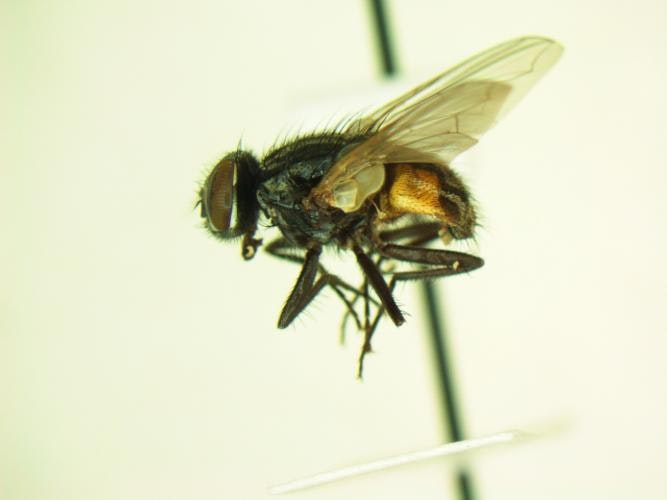
Readily entering structures, house flies are most abundant during the hotter summer months. Less than 3/8 inch in length, house flies have four dark stripes on the top of the thorax. Eggs are laid in warm, moist organic material such as animal manure, compost bins, and decaying fruit and vegetables. To control house flies, keep garbage and compost in closed containers and remove animal wastes and other organic materials. Sticky ‘flypaper’ strips can be used to eliminate small numbers of flies in closed areas, but are not effective outdoors.
Little House Fly
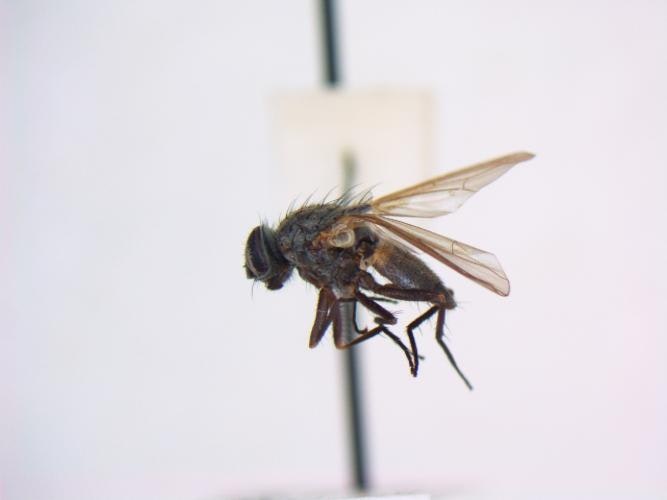
Little house flies do not tolerate higher summer temperatures and are must abundant during the cooler spring and fall months. Two-thirds the size of the house fly, the little house fly lacks the thoracic stripes. Eggs and larval stages are commonly found in animal waste, but other decomposing organic material will also provide suitable breeding sources. Little house flies will typically hover in breezeways and other protected areas. They can be controlled by removing animal waste and storing garbage in closed containers. Strong fans can also be used to keep little house flies away from food preparation and eating areas.
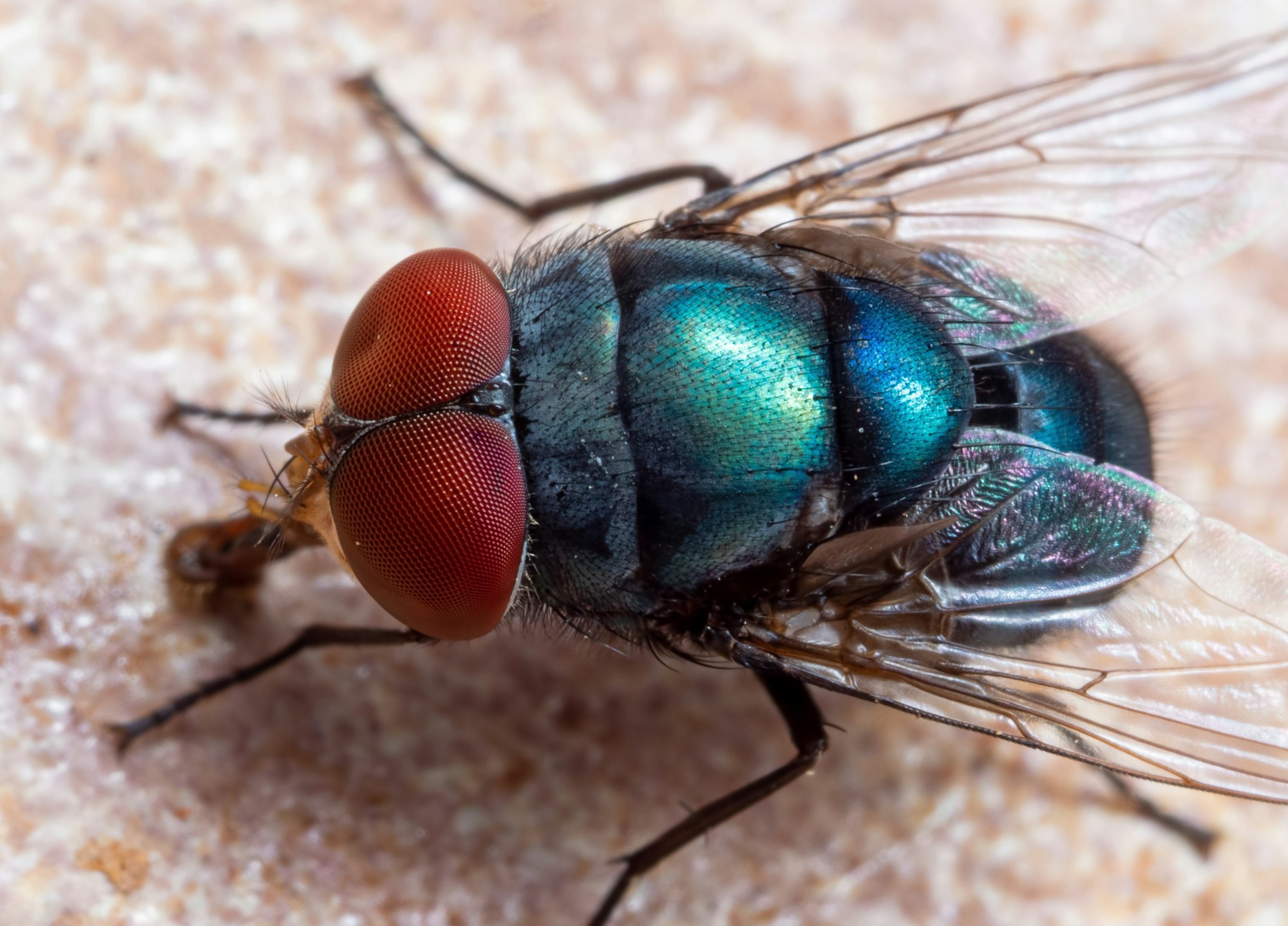
Blow Flies
Distinguished by their metallic, shiny blue or green coppery color, blow fly species are strongly attracted to animal carcasses, human food, and pet waste to lay their eggs. Blow fly larvae may be seen emerging in numbers in search of drier pupal sites. Blow flies can be controlled with proper sanitation, including removal of pet waste and animal carcasses, and storage of garbage in closed containers.
Stable Flies

Also known as the “biting fly,” stable flies have a painful bite and commonly harass livestock such as horses and cattle. Abundant during the summer months, stable flies have bayonet-like mouthparts to feed on blood. These flies will readily develop in moist, decaying organic material especially when mixed with animal waste and urine. Removal of breeding sources will reduce stable fly populations. Insect repellents can be also used to provide relief for livestock.
Common Fruit Fly
Fruit flies are attracted to overripe and rotting fruit. Yellowish or brownish in color, these flies are a little over 1/10th of an inch long. Fruit flies can be easily controlled by removing overripe fruit inside the home and harvesting ripe and fallen fruit outdoors..
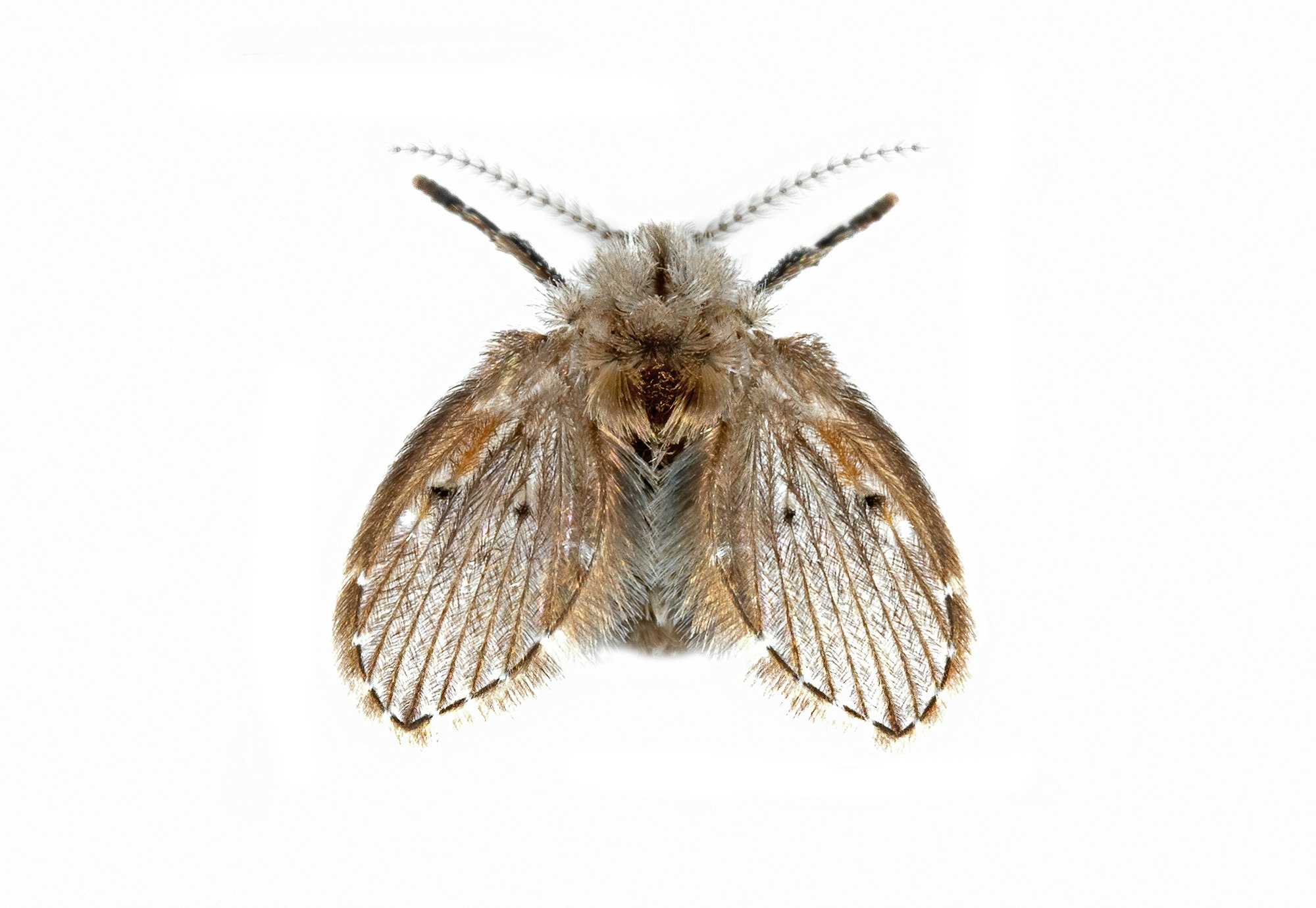
Moth or Drain Fly
Dark in color with fine hairs on the wings, moth or drain flies are around 1/8 inch long. These nuisance flies typically develop in slimy, organic surfaces common in sink and shower drains. They can be prevented by periodic cleaning out of drain pipes and traps, either by using a brush or an enzyme drain cleaner.
Snipe Fly
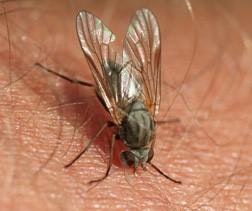
Snipe flies are small stout bodied flies that can range in color from black to brown and yellow. Though most snipe flies are predators of other insects, one genus (Symphoromyia) has adapted to feeding on mammal blood. Similar to mosquitoes, only adult females will seek out and bite hosts. Typical hosts can include a number of mammals such as deer, cattle, horses, dogs, and humans. Bites on humans usually occur around the face and neck, but are also common on the front and back of the hands. The bite of a snipe fly is painful, most likely because its slashing/sponging mouthparts are similar to closely related horse flies and deer flies. The bite can cause moderate to severe inflammation and small droplets of blood can pool at the bite site. The snipe fly blood feeding process usually takes 30-35 seconds. There has yet to be any definitive connection between snipe fly bites and disease transmission of any type. In California, snipe flies live in mountainous and coastal regions and are active from April to mid-July. San Mateo County Mosquito and Vector Control District lab staff have collected adult specimens in carbon-dioxide baited traps from woodland and grassy areas in and around Portola Valley.
Management
Adult flies lay their eggs in waste or decaying organic material. These eggs hatch into larvae – sometimes called maggots – and complete their development there. They emerge as adults in as little as a week.
The best way to resolve fly problems in and around your home is to remove the materials flies lay their eggs in. These can include garbage, rotting fruits, pet and livestock wastes, and animal carcasses.
Using door and window screens, or keeping doors and windows closed, will help keep flies from coming indoors. You may also want to use sticky fly paper ribbons to eliminate small numbers of flies indoors. Pesticides are not usually necessary for household fly problems.
Fans may be helpful to keep flies away from outdoor food preparation and eating areas.
For more information about flies, visit the UC IPM webpage.
*Snipe fly photo from Colorado State University Extension
Page last reviewed: January 10, 2022
